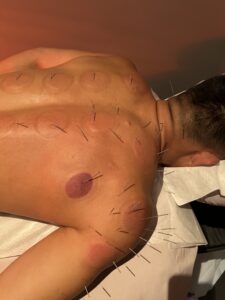Relief of Shoulder pain, Acupuncture can be a Natural Solution for Shoulder Pain, whether from rotator cuff injuries, frozen shoulder, or arthritis, which disrupts daily life, limiting mobility and causing discomfort. Acupuncture, a cornerstone of Traditional Chinese Medicine (TCM), offers a holistic, non-invasive approach to alleviate shoulder pain by restoring the body’s energy flow, or Qi. By inserting fine needles into specific meridian points, acupuncturists stimulate blood flow, reduce inflammation, and promote muscle relaxation, thereby addressing both symptoms and their underlying causes.

Acupuncture Treatment for Shoulder Pain at Acupuncture Zen
Research supports acupuncture’s effectiveness for shoulder pain. A 2012 meta-analysis in JAMA Internal Medicine found acupuncture significantly reduces chronic pain, including shoulder issues, with lasting benefits compared to sham treatments. Another study, published in Annals of the Rheumatic Diseases (2015), reported a 44% improvement in shoulder function after ten sessions, with pain scores decreasing from 71.3 to 28.3 on the visual analog scale.
Acupuncture also minimizes reliance on pain medications, reducing side effects, as only 10% of study participants continued medications post-treatment. Mechanisms include the release of endorphins and neurotransmitters, such as serotonin, which suppress pain and inflammation. Electroacupuncture and moxibustion, often used alongside, enhance outcomes by improving joint mechanics and reducing trigger point pain. Unlike conventional treatments, acupuncture targets underlying imbalances, offering long-term relief for conditions like shoulder impingement or osteoarthritis. Safety is a key advantage; acupuncture boasts a low risk of adverse effects when performed by licensed practitioners. For optimal results, 6–10 sessions are typically recommended, tailored to individual needs.
To explore acupuncture as a treatment for shoulder pain, consult a specialist. Dr. Tony Willcox has been practicing for over 19 years. Visit Acupuncture Zen in Delray Beach, Florida.
References: